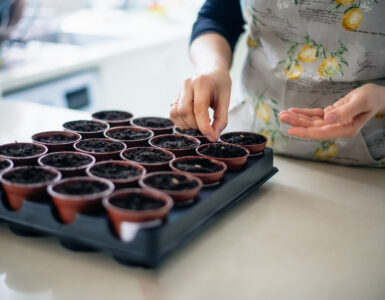Teresa Hunsaker, USU Extension/Weber County Family and Consumer Science Educator, shares great tips for keeping those whites looking as crisp and pristine as they do the first day you wear them, without resorting just to chlorine bleaching.
Divide and Conquer
Although it takes more time, always separate whites from all other colors because any non-white fabric has the potential to bleed.
Don’t Overdo It
Follow your washer’s loading instructions, and don’t use excess detergent. Any detergent residue can act like a magnet for dirt, leaving whites dirtier than before washing. Also, beware of bleach. If your garment’s tag doesn’t advise bleach usage, do not use it, it can break down natural brighteners in white cotton and even man made fibers—causing them to yellow.
Turn Up the Heat
Use the hottest temperature the fabric can take (always refer to the care label for this temperature range). Increasing the water temperature by 10 degrees will enhance the effectiveness of detergent—especially with cotton whites.
What Spill?
If you let a stain on a white item set, or allow a garment to get very dirty, it becomes very difficult for us to restore it to its original state. Don’t let stains settle into your clothes; treat them right away with a mild solution of laundry detergent and water, or stain-removing product. Do this even if you’re not planning to do a load of wash right away. If you decide to use a stain-remover, remember to wet the stained area first, as the moisture helps to create a lather.
Resist Reaching for the Bleach
Most of us assume that chlorine bleach will keep our summer whites bright. But this is not the case. Bleach breaks down optical brighteners (chemical additives applied to white fabrics), and can turn bright whites to dingy yellow or gray. Use judiciously and ONLY if the garment care label advises chlorine bleach.
The best choice is to buy commercial non-chlorine bleaches. Or, instead you can make your own version using 3 percent hydrogen peroxide and water(about a 4:1 ratio water to peroxide). However, commercial brands of non-chlorine bleach include oxygen bleach stabilizers they do help reduce the product’s reactivity, thus keeping them more effective over time. You can find non-chlorine bleach in both traditional supermarkets and in health food stores.
Soften Your Water
The minerals in hard water can gray clothes. If you have very hard water, add ½ cup of white vinegar to your rinse water. OR, adding ½ cup of lemon juice to the rinse cycle of a medium load of whites will lightly bleach the clothing. This technique is especially effective on clothes that are then hung to dry on the line.
Brighten Whites
To brighten whites, add ½ cup borax or washing soda (both are available in the laundry section of your supermarket) to a medium load of laundry, along with the normal amount of detergent. Another effective additive is a water softener (not fabric softener) such as White King. It is a powder and is found in most laundry sections of the supermarket.
About Light
A rule of thumb is that natural fibers love the sun and hanging them outside to dry on the line is to their benefit. Reading the Use and Care label may be helpful, as some of the new manmade fibers are sensitive to the light—can cause yellowing, or destroying the optical brighteners added to the white dyes.
Avoid the Dryer
Interestingly enough, the dryer can actually cause you more trouble then you think. Heat can set residual stains and detergent build up, which will not help you get the whitest clothes possible. Try just hang drying your whites—or at least the ones you want to stay impeccably white.
One more thing: Yellow stains on the underarms of your shirts aren’t just ugly, but they can contribute to the demise of plenty of nice, white summery shirts. The build up of deodorants/antiperspirants and body oils cause yellowing. So, before those nice white shirts get yellow underarm stains, learn to get in the habit of automatically spraying the following solution on the underarms of the garment before putting in the wash:
4 cups water
1 cup liquid laundry detergent
1 tsp meat tenderizer(meat tenderizer is an enzyme which breaks down proteins—body oils/sweat contain proteins.)
Mix well and place in a quart spray bottle and store by the washing machine for handy access when doing laundry.
OR,
½ cup ammonia
4 cups water
2 TBS. liquid laundry detergent
Mix well and store in a quart spray bottle.
Treat older stains by sponging the area with a solution of 1 tbsp. white vinegar and 1/2 cup water. Old stains may be impossible to remove
To learn more about this subject or any consumer issue, go to USU Extension/Weber County’s website at extension.usu.edu/weber or call (801) 399-8200















Add comment